It is no secret that I am a big fan of Hazel Tindall. I first met Hazel during a visit to Shetland in Wool Week, 2011, when I took a class with her on Fair Isle knitting. I often think about that afternoon, and the profound effect it had on me. Hazel talked to us intelligently about so many things, her own knitting, and her mum’s knitting, and she read from a wonderful Stella Sutherland poem, The Allover (a snippet of which you can hear if you follow the link). I think I was just suddenly struck by the importance of the history and the skills that Hazel carried around with her in her needles, and her beautiful Fair Isle allovers, and which she was so happy to share with us visitors. In the five years that I’ve known her, Hazel has continued generously sharing that expertise through her work with the Shetland Guild of Spinners, Knitters, Weavers and Dyers; as patron of Shetland Wool Week; by teaching countless classes all over the world; and through her DVD about Fairisle Knitting. She’s also become a good friend, and I have many things to thank her for in relation to the research I’ve carried out for my Yokes book, and now The Book of Haps.
I naturally wanted her to contribute to this project, was hoping she’d be able to sneak some Fairisle in somewhere, and was really bowled over when I saw just how she’d done so! Hazel’s Hamegaet design combines a really innovative construction with an elegant, wearable shape. The body is picked up from (steeked) Fairisle shoulder pieces, and worked downwards. Short rows develop the three dimensional shape, and the fabric is finished with a neat picot edging. It is such a nifty and appealing design, and I was very happy when Hazel agreed to model it herself. We shot these photographs in her back garden at Aith, in Shetland, on a sunny Sunday morning.
I caught up with Hazel to chat about Hamegaet.
KD Hi Hazel! Thanks so much for contributing to the Book of Haps. I’m particularly pleased to have Fairisle represented among the designs! Like you, I enjoy working with colour, and Hamegaet offers a taster for those who may not currently have the appetite for a full Fairisle project. To inspire those who don’t have much experience with the technique, I wondered if you could say a few words about what it is you love about Fairisle knitting particularly?
HT For several years I did not do much knitting – I was ‘hooked’ on crochet instead. Then I decided it was time to lay up loops for a Fair Isle cardigan for myself. That day, as soon as I started to knit with two colours, I realised there is a rhythm to colour knitting that I had missed. That must be twenty years ago and since then I have knitted Fair Isle almost constantly. I knit with a yarn in both hands, the background in my right and the pattern colour (the one which creates the shape) in my left.
As I have started to lead more workshops I realise that knitters can have trepidation about using steeks, and cutting their piece of circular knitting to make flat pieces. Hamegaet gives a gentle introduction to knitting with colour, using and cutting steeks, and how shaping and steeks work together.
KD Your hap design was inspired by the immediate surroundings of your home in Aith, on Shetland’s beautiful west side. Could you explain the meaning of “Hamegaet” for those who may be unfamiliar with it?
HT Hame is the Shetland dialect word for home and gaet is the dialect for path. The wedge shape of the Fair Isle part is like a path narrowing into the distance – or widening as you approach home, and the motif can be likened to 4 paths meeting at a crossroads. The textured part of Hamegaet reminds me of the stones visible in the tarred surface of the road leading to my house.
KD I’m interested in your process when creating a design. I think I’m unusual in that I often start knitting with a finished look in my head – often an entire outfit. What’s generally the starting point of a design for you?
This is your hardest question!
I almost always use jumperweight yarn so I know the tension without needing to swatch. I decide what I am going to knit – a jumpers/cardigans, gloves, hats or cushion cover are my favourites. Most of what I knit includes some Fair Isle. Hats and gloves are easier as I know the stitch numbers and rows needed. This weight of yarn gives leeway for stitch numbers and rows to change a little without affecting the finished size too much. Then I pick colours – for head and hand wear these can be to match a coat – usually a main colour and 4 or 5 others. Next I flick through my various books to choose which motifs to use, and which will fit the stitch numbers. I created a number of my own motifs when I was knitting Fair Isle yokes during the 1960s and had got bored with the traditional ones and I still use these. The motif in Hamegaet is one I especially like as the basic shape can be adapted to different sizes from 15 stitches x 15 rows to 25 stitches x 25 rows.
Jumpers and cardigans take a little more planning as the first consideration is what motif will be at centre front/back and what will be at the shoulder top. Once that’s decided it’s a case of adding ‘fillers’ for underneath the arms and between big motifs. I prefer vertical panels in jumpers and cardigans – the colours are horizontal, my body is short and round so I want vertical motifs to draw the eye upwards. Also, once the motifs are set you can’t really go wrong.
Most of the patterns I write for sale are from things used by me so are in my favourite colours. As far as possible I try to include alternative colour ways in my pattern instructions – I enjoy that challenge as I force myself to work with, for example, greens and browns. As I write more patterns I find I knit things differently as I consider how easy it will be to explain things in words. Sizing up and down for patterns also means more thought goes into which motifs to use.
KD You’ve produced a popular instructional video about Fairisle knitting, have been an influential patron of Shetland Wool Week (2014), and were one of the guiding hands behind the Shetland Guild of Spinners, Knitters, Weavers and Dyers important book, A Legacy of Shetland Lace (2012). Your hard work in recent years has helped bring Shetland knitting back to the attention of the world. Can you say a little about where you think Shetland knitting is today?
Firstly, Kate, I think your patterns, books and blog have done a great deal to spread the word about Shetland knitting and yarn.
Yesterday I spent 10 minutes watching the world go by in Lerwick and was pleased to see so many folk wearing Fair Isle – just a few years ago almost the only time it was seen was as fancy dress (we have to be glad that the clothing had been kept and still available for dressing up).
There are more knitting and craft groups throughout Shetland and more young people are interested in becoming knitters and wearing their knitwear. Attending a group is so useful as ideas and techniques can be shared between generations. I have learned a lot through joining Shetland Guild of Spinners, Knitters, Weavers and Dyers, through seeing, chatting and asking. Often by interacting with others you learn something without realising that there was something useful to learn, or that you didn’t know about. For example short row shaping is not something I’ve often used, but works well for this design.
The Shetland Peerie Makkers initiative is a chance for some Shetland Primary school children to learn to knit from enthusiastic and experienced knitters. The volunteers get as much pleasure and enjoyment from this as the youngsters.
Shetland Wool Week is attracting a great deal of attention and classes led by Shetlanders are extremely well attended. Our challenge is to develop tutors of the future.
For the last twenty years I have knitted at least one allover Fair Isle cardigan or jumper to ensure that I retain the skill, and to try different construction methods. Not many Shetlanders hand knit Fair Isle allovers now so I made the video as I feared the skills were in danger of being lost.
Lace knitting is probably not increasing in popularity quite as quickly as Fair Isle but I am sure that will come too. Lace is not my forte – when I wanted to learn as a young girl, my Mum told me it was too hard and I should stick to the Fair Isle. I was in my twenties before I tried lace, and I’ve yet to make my first Shetland hap, though I did knit a bedspread when I test knitted the instructions for Chapelside Stole (I used bigger needles and thicker yarn) from A Legacy of Shetland Lace.
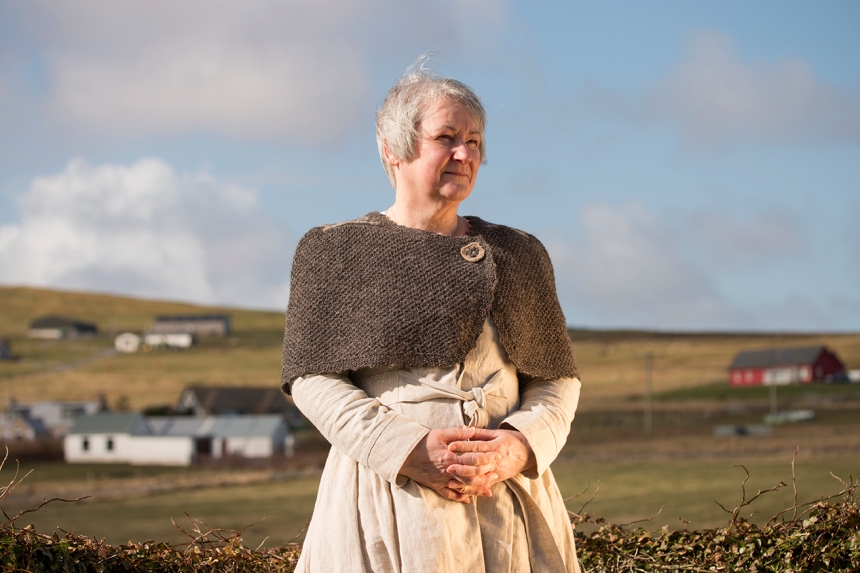
KD I know designers often can’t give details of their current projects, but I wondered if there was anything you might be able to reveal about your plans for the rest of 2016?
I am leading more workshops during 2016 than I’ve ever done before. These are mostly for special interest groups visiting Shetland from Japan, USA, and other parts of the UK and Europe, as well as visitors who travel from all parts of the world to visit Shetland Wool Week. As your book goes to print, I will be enjoying a knitting trip with Craft Cruises.
Over the summer months I aim to be at Shetland Textile Museum to demonstrate knitting one afternoon a week.
In the autumn two new patterns will be published in Shetland Wool Week Annual and in Vogue Knitting. Plans have begun for the next book by members of Shetland Guild so I need to put my pattern proposal forward for consideration.
The theme for Shetland Guild’s annual competition is ‘inspired by A Legacy of Shetland Lace’ – I know which pattern I want to use and a have picture in my mind of how the finished article will look – but will likely leave it till the competition date is loomimg before I get started.
At the same time I need to discipline myself to finish writing all the patterns which are almost ready.
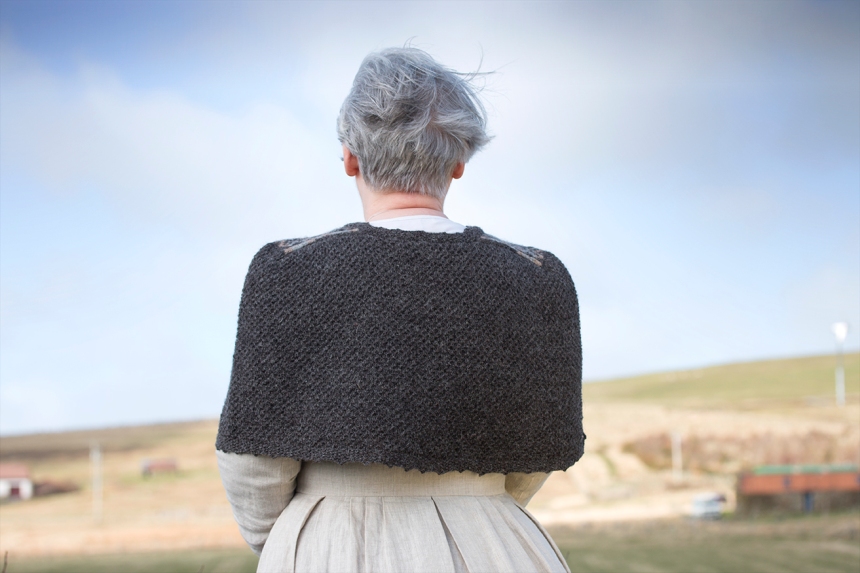
Thankyou, Hazel, for this beautiful design!
Well, only two haps to go before the whole set of designs are revealed! I will be introducing tomorrow’s design, so do pop back then to see it! You can see all of the already-revealed designs on Ravelry, and pre-order the book here.


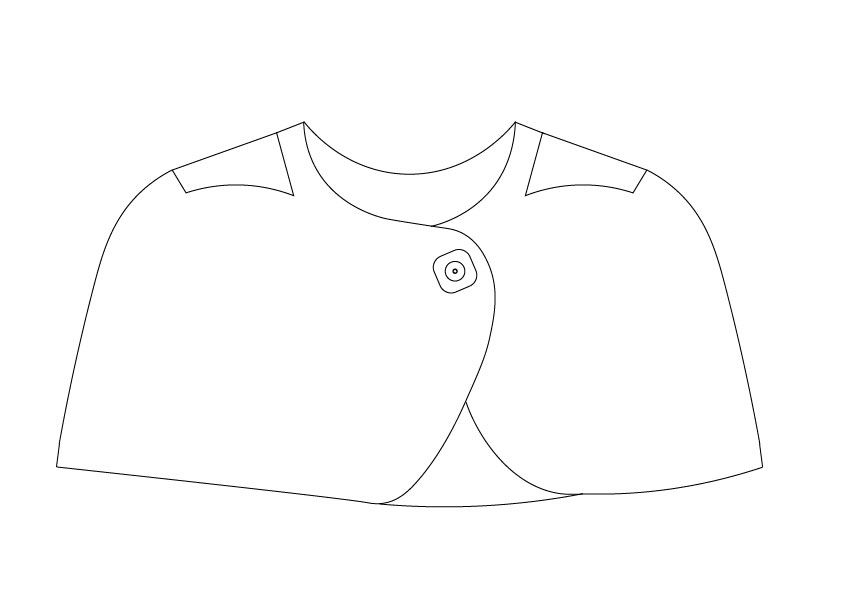

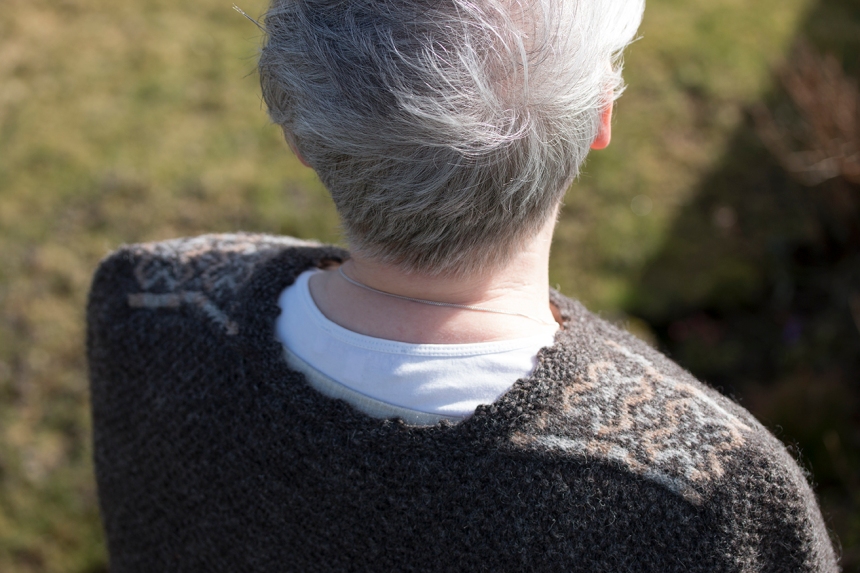
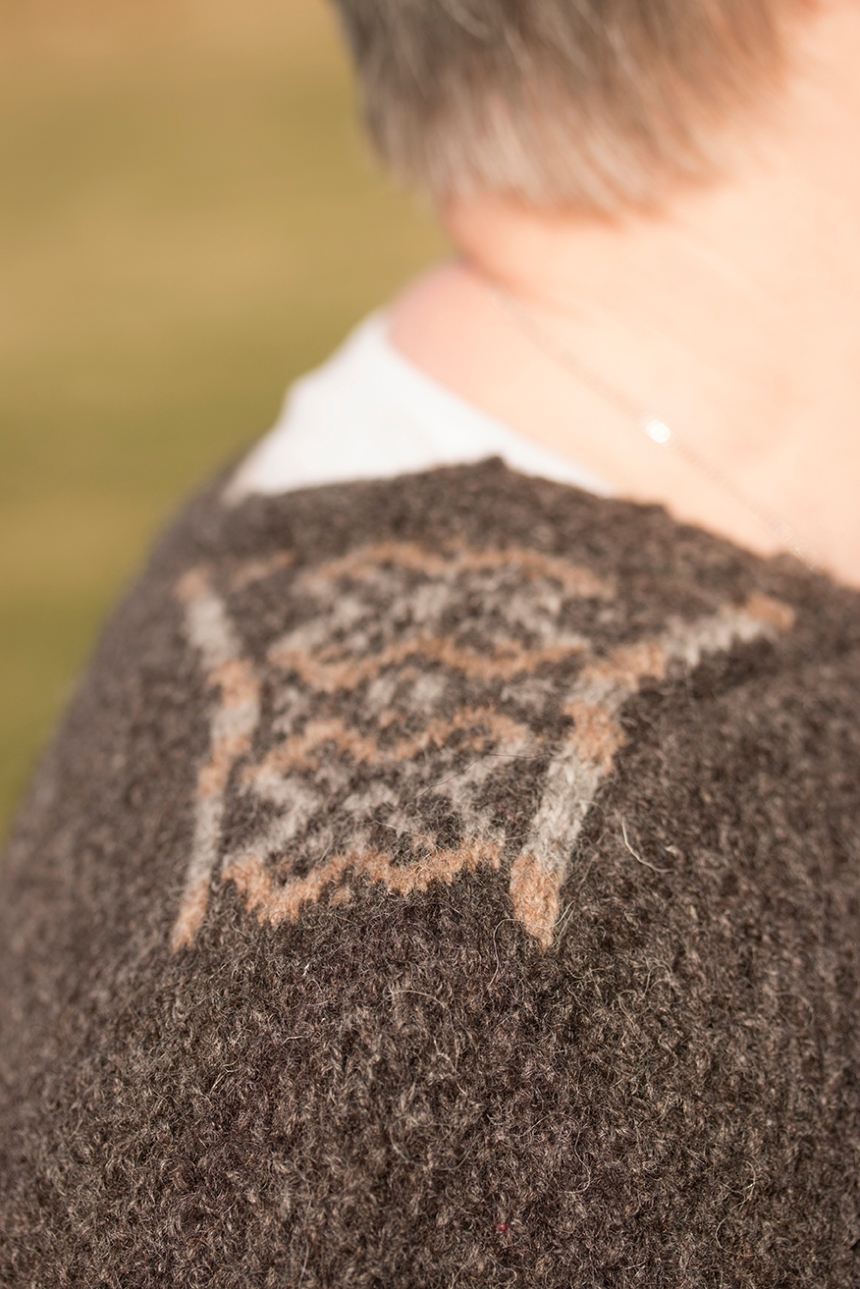
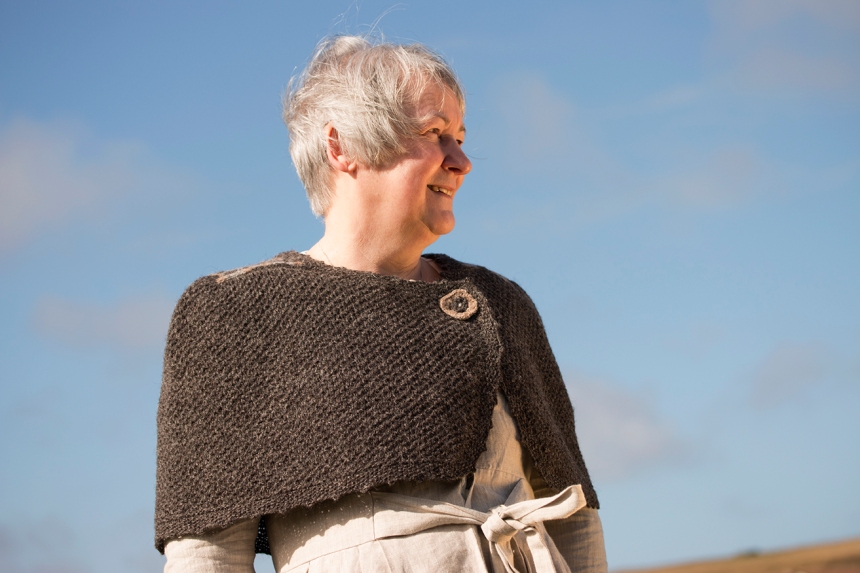
Lovely hap and lovely dress. Do you know if Hazel made the dress and if she would share the name of the pattern? Thanks so much for all you do!
LikeLike
Hazel is wearing a coat from Cabbages and Roses underneath her design
LikeLike
Thanks! It complement the hap so beautifully.
LikeLike
Thank you for asking her some of the questions I wish I could ask Hazel in person. I’ve knitted one of her designs and felt that gave me a wonderful glimpse into her thoughtful personality and I look forward to knitting many more!
LikeLike
I. Love. This. Would buy the book for this pattern alone.
LikeLike
Hazel’s design story lives in my heart now, enriched after reading this
LikeLike
Sigh………….I gave in and ordered your book Kate – even though I never knit other people’s patterns! The reveals have given me so many ideas of my own. Thank you so much for the springboard!
LikeLike
Such a beautiful design, Hazel! So love the touch of Faie Isle! Kate, the designs you have gathered for this book are just amazing ~ a real ♡ compliment. Can’t wait to give them a try :-)
LikeLike
Simple, elegant, unique … What more could a knitter ask for?!
LikeLike
Another stunning, and incredibly unique hap! Inspired! I also love all of the clothes your models are wearing under their haps. I feel as if there might be a common – pardon me – thread between all the styles under the haps…are the clothes all designed/made by the same person?
LikeLike
Ha! Well, the styling for the shoots is done by me, and much of the clothing is from the KDD wardrobe
LikeLike
I suspected as much! :-) Wish I could shop in your closet too!
LikeLike
Wee! I so love this design, elegant in its simplicity. I raise Shetland sheep and this project would show off the Shaela loveliness of my handspun. The stitch for the main section looks like linen stitch. Can’t wait to get this pattern.
LikeLike
Love the Hap. And Hazel: it looks lovely on you. I also love the dress/coat you are wearing!!
Greetz from the Netherlands
Ellen
LikeLike
Such a fascinating blog post. I am a long term admirerer and wearer of Fair Isle. Whatever happened to the Fair Isle cardigan which I bought in Covent Garden in London? I wore it for many years until it practically fell apart although it couldn’t because it was Fair Isle!
LikeLike
Kate, please do a blog post on styling the looks (hopefully letting us know where to find these beautiful garments!
LikeLike
What an interesting, unexpected hap. I fully expected Hazel’s design to have much more Fair Isle on it, and the first pictures didn’t show any at all. I love the unexpected use of the Fair Isle on the shoulders. Hazel’s design sense is amazing.
LikeLike
Hazel you are a wonder, that is a fabulous design. It made me want to buy the book immediately, which I will be doing. I cannot wait to try this one though.
LikeLike
Fair Isle epaulettes! I love how the construction, probably even without the button, keeps the hap on the shoulders. Gosh, could this hap help me conquer my fear of steeks? I love the name too, and the use of natural colours.
Without seeing the remaining patterns in your book, what most amazes me is the *difference* between all of the designs. So much creativity. Were the designers mind-reading ( as talented as they are, such skill wouldn’t surprise me) or communicationg through more pedestrian means to end up with so much variety?
LikeLike
This would be a perfect first steeking project, since the fair isle bits are so small, and if you messed up all you’d have to do is try again, because the whole thing wouldn’t be ruined :)
LikeLike
Hazel’s design is lovely. I had the good fortune to meet her on a knitting holiday in Shetland. She was sitting by a widow knitting away on a lovely sweater. Watching her knit was a joy and she was so sweet! I am getting excited with each design’s reveal.
LikeLike
This is beautiful! I love the construction and the combination of Fairisle and texture. What a variety of designs you are giving us. I just can’t wait for the book to arrive and am so looking forward to reading the essays too!
LikeLike
Blown away again! Wow!
LikeLike
Kate, I love all these haps!!!
reagards, Paula from the Neterlands
LikeLike
j’aime beaucoup ce châle et aussi le manteau (quelle est la marque) / I love this shawl coat and also (what is the brand), thank’s.
LikeLike
Kate, I cannot find the right words to compliment Hazel’s design so Beautiful, Elegant, Heavenly will have to do for now, It’s just so unusual and first photographs i have ever seen of Hazel without her knitting belt and needles.
LikeLike
Love this, it’s so unusual and looks very wearable. Unfortunately I have found a few clothes moths and can’t buy yarn until they are eradicated! so this one will have to wait a while.
LikeLike
Oh… that is my absolutely favourite so far! I’m badly waiting for the book now to try this lovely piece. Wonderful.
LikeLike
Just spent 12 days with Hazel on a cruise and I have to agree with you Kate, that she is a lovely lady with a sly wit. I will be knitting this hap for sure.
LikeLike
That is such a womanly, elegant hap. It’s amazing and that’s before you even notice the colour work. Brilliant.
LikeLike
That is one of the most beautiful things I have ever seen.
Am I to be condemned (enticed, enthralled) into knitting haps for the rest of my life, to complete a lot of the wonderful designs you have shown us?
LikeLike